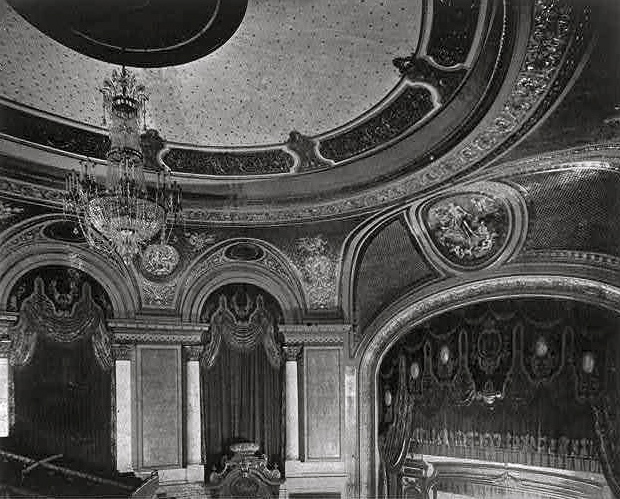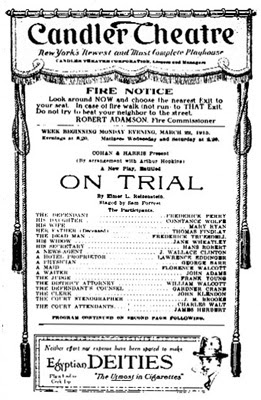In 1854 New York's first successful large scale opera house opened on the north side of 14th street at the intersection with Irving Place. There had been opera houses before, but not with a capacity of 4000 seats. There had been the Italian Opera House built in 1833 by Lorenzo Da Ponte as a home for his new New York Opera Company, which lasted only two seasons. In 1847, the Astor Opera House opened on Astor Place, only to close several years later after the infamous riot provoked by competing performances of Macbeth by English actor William Charles Macready at the Opera House and American Edwin Forrest at the nearby Broadway Theatre. After the Metropolitan Opera House established itself as the opera house in New York in 1883, the Academy of music stopped presenting opera in 1886. The Academy of Music was not long for this world or 14th street. After being taken over by William Fox, the old Academy, with it's 5 balconies, went legit for a while then Vaudeville, then movie and Vaudeville. Then Con Ed (who owned the land that the theater and it's neighbor Tammany Hall were on) expanded it's headquarters. The Academy was demolished in 1926.
William Fox knew what was coming and purchased a plot across 14th Street, hired his (and mine) favorite architect, Thomas Lamb and opened a 3600 seat theater “Built to withstand the Ages— Dedicated to future generations,” as the publicity stated. This picture is from 1931 and vaudeville is still a feature at the Academy of Music. The marquee advertises the appearance of Barto and Mann. Dewey Barto (1896–1973) and George Mann (1905 — 1977) were a comedic dance act known as the "laugh kings" of vaudeville. From the late 1920s to the early 1940s Barto and Mann toured the country and every marquee with their name on it was photographed by George Mann. Their acrobatic, somewhat risqué, performance played on their disparities in height; Barto was 4'11" and Mann was 6'6. Dewey Barto was Nancy Walker (Rhoda's TV mother) father.
The lobby just after opening in 1926.
House left. This must be one of the first houses Thomas Lamb designed that did not include boxes. His Loew's 83rd Street built the same year did have boxes and was built for the same purpose, movies and vaudeville. All the way over on the left side of the pit there appears to be a Mighty Wurlitzer which ultimately fell into disrepair but was restored and played on October 28th, 1968 in what was billed as "Sounds Of The Silents". The organ had been restored by The Theater Organ Society of New York. The Academy opened with a 60 piece orchestra to play for the feature picture as well as the show.
This is house left again from the balcony.
From 1964 through 1978 the Academy became a rock venue. During this time, the Academy became less and less of a first run house and finally stopped showing movies by 1975. During the day the bill included double and triple features of kung fu pictures. In 1971 the Fillmore East closed and the Academy was born again as the premire smaller than Madison Square Garden venue for rock music shows. Everyone played here, from the Beach Boys, Rolling Stones, Yes, Fleetwood Mac, Bruce Springsteen and the E Street Band, The Band, even AC/DC had their American debut here. The name change to Palladium came in 1976.
January 7th, 1978 to be specific. The downtown location made this house the ideal location for this show.
And this one too. This must have been an incredible show.
Progress? In 1985 after being forced to sell their Studio 54, Ian Schrager and Steve Rubell converted the Palladium into a night club. Architecture firm Arata Isozaki & Associates redesigned the space.
The Dome looking towards where the stage used to be.
What was left of the old Academy was restored but it was blocked by the improvements. In 1998 the Palladium closed, was sold to NYU and was demolished the Academy of Music and replaced it with Palladium Hall, a dormitory.



















